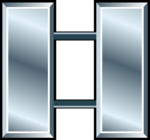Captain (disambiguation)
Captain is both a nautical term and a military rank. The word came to English via French from the Latin capitaneus ("chief") which is itself derived from the Latin word for "head" (caput).
The term has different meanings both at sea and in the military. Confusion between the three types of captain (nautical, naval and army) often exists in literature, drama and real life. The customs indicated are necessary to avoid confusion at sea when the question of "Who is in charge of the ship?" may be a matter of life and death.
Nautical
Captain is the legal status of the master of a ship at sea. A nautical captain may be a civilian or a naval commissioned officer of any rank. As the commander of a vessel under way, a nautical captain has enormous legal powers, including the right to use deadly force to suppress piracy and mutiny. Mutiny is the crime of disobeying the lawful orders of a nautical captain at sea. The captain of a ship at sea is in absolute command of that vessel even if higher-ranking persons are aboard. If higher-ranking persons give the nautical captain orders, they are very careful to say what they want done rather than specifying how the orders are to be carried out, because even higher rank does not give them the right to interfere in how a captain runs the ship.
The officer who is ranked immediately below the Captain is designated the First Officer (also Executive Officer or First Lieutenant), and is responsible for implementing the orders of the Captain as well as conferring with the Captain on matters concerning the ship. This "second in command" is typically responsible (along with the senior enlisted petty officer) for maintaining minor discipline on the ship.
Naval
Captain is the rank of a commissioned officer between Commander and Commodore or Admiral (1 star). Naval officers below the rank of Captain who are assigned to command a ship are addressed as captain while aboard that ship, by nautical custom. A naval captain traveling aboard a vessel s/he does not command is never referred to by rank to avoid confusion with the nautical captain, who remains in charge of the entire ship (including the passengers who outrank the nautical captain).
Captains with field naval commands generally command ships of cruiser size or larger. The more senior the officer, the larger the ship. Commanders of aircraft carriers can be Rear Admiral, but generally, ship commanders are of Captain rank or lower. Also, many Captains are either retired or have desk jobs.
See Also:
Army

In armies, Captain is the rank of a commissioned officer between First Lieutenant (Lieutenant in the British Army) and Major. An Army or Marine Captain is ranked three steps lower than a navy Captain. An army or Marine Captain has no special authority with respect to a ship and is just another passenger or crew member. In the United States Army, United States Marine Corps, and United States Air Force, a captain's insignia consists of two silver bars. In the British Army and Royal Marines the insignia is a vertical row of three pips (sometimes called "stars").
Captains in the army generally command companies, which are one step below battalions.
See also Military unit.
Royal Air Force
A Group Captain is usually a station commander equivalent to a Navy Captain or Army Colonel
Civil Aviation
In commercial aviation, a pilot in command of an aircraft is often referred to as a "captain." This practice began with the flying boats of the 1930s and quickly spread to most of the airline industry. Most airline captains wear uniforms with four bars on the sleeve and epaulet (imitating the rank basis of the rank insgnia in both the US and Royal Navies) although this varies from company to company.
See also: military rank and comparative military ranks
Sports
Most sports teams also have captains:
